AZO’s Plastics Recycling Solutions Now in AU/NZ
AZO’s Plastics Recycling Solutions Now in AU/NZ
Engineering Flexible, Resource-Saving Systems: A Technical Deep Dive into AZO’s Plastics Recycling Solutions

Intro
Recycling plastics at industrial scale requires reconciling wildly variable feedstocks with consistent, high-quality outputs. Post-consumer streams of film, flakes and granulate deliver moisture, fines and odours, while industrial arisings such as PVC window frames or battery housings can contain abrasive glass and metal fragments. AZO addresses these challenges through modular plant concepts, underpinned by thorough material characterisation, advanced conveying and separation technologies, precision dosing and mixing, and integrated control systems. The result is a compact, scalable solution that optimises energy use, minimises waste and delivers reproducible product quality.
Comprehensive Feedstock Characterisation
At AZO’s Osterburken test centre—and sister facilities worldwide—customer samples undergo up to 250 annual tests covering:
-
Bulk density measurement via standard tapped-density protocols.
-
Particle-size distribution analysis, using sieving and laser diffraction to quantify fractions from sub-100 µm dust to >20 mm flakes.
-
Moisture determination through loss-on-drying ovens, ensuring correct throughput compensation in dosing units.
-
Flowability assessment, employing Jenike shear testers and angle-of-repose benches to predict bridging risk.
Results populate AZO’s proprietary bulk-materials database, enabling engineers to select equipment geometry, blower sizing and control parameters before committing to plant layouts.
Robust Pre-Sorting and Shredding
Incoming plastic waste is first passed through:
-
Heavy-duty shredders (single or twin-shaft) with replaceable alloy-steel knives, reducing bales or flakes to a nominal 10–50 mm particle size.
-
Magnetic separators and screens, removing ferrous and non-ferrous metal fragments.
-
Air classifiers and vibrating screens, which eject oversized or high-density contaminants such as stones, wood or sand.
This mechanical pre-treatment extends the life of downstream pumps, centrifuges and extruders by preventing abrasion and blockages.
Precision Vacuum Conveying
AZO’s vacuum systems transport shredded plastic from collection points to processing modules via DN 100–DN 200 steel piping. Key design features include:
-
Frequency-controlled blowers: Stepless adjustment of volumetric flow (up to 30 m³/min) and vacuum levels (to –400 mbar) ensures optimal air-to-material ratios.
-
Cyclonic pre-separator: Diverts >90 % of coarse flakes ahead of cartridge filters, reducing pulse-jet cleaning cycles.
-
Slide-in suction valves: Pneumatically actuated gates with on-axis agitators prevent dead-zones and bridging of non-free-flowing materials.
-
Pleated-cartridge filter banks: 1 µm filtration efficiency, pulse-jet cleaned on-line, with collected dust discharged into sealed big-bags via rotary valves.
For flake streams with low bulk density (< 100 kg/m³), AZO offers receivers with large-area discharge outlets and impact vibrators calibrated to frequencies of 50–100 Hz, ensuring reliable de-pressurisation and product dumping.
Wear-Resistant Receiver Design
Receivers form the interface between pneumatic conveying and gravity-feed processes. AZO’s standard features include:
-
Nitrided stainless-steel lining for resisting abrasive fillers and fibrous contaminants.
-
Replaceable wear plates and inlets, machined from high-chrome castings, exchangeable within one hour to minimise downtime.
-
Conical or steep-cone geometries (30–45° wall angles) combined with mechanical agitators to avoid rat-holing and ensure mass flow.
-
Sensor-based level detection using capacitive probes, triggering blowback cleaning or feed-rate adjustments automatically.
These adaptations maintain consistent flow rates even when processing mixed-material batches.
Gravimetric Dosing and Mixing
Consistent compound formulations demand precise metering:
-
AZODOS® loss-in-weight feeders: Each feeder holds up to 500 kg of powder or granulate, with load cells accurate to ± 0.1 % of full scale. A closed-loop control adjusts screw speed (0–50 rpm) based on extruder torque signals, delivering throughputs from 0.5 kg/h to 2 000 kg/h per feeder.
-
Multi-component AZO®MIXOMAT: Integrates up to 30 feeders via a central gravimetric platform. Formulation ratios are stored as digital recipes, and a mechanical decoupling system isolates weighing cells from external vibrations. Feeders swivel on Hirth-coupling joints for rapid colourant changeovers.
-
Inline mixing: Static mixing elements (element lengths of 20–40 × pipe diameter) ensure homogeneity before extruder intake, reducing melt temperature fluctuations and pressure spikes.
Quick-release feeding screws and hinged access doors permit operator cleaning and material change in under 30 minutes, supporting just-in-time production.
Integrated Dust Filtration
Granulate dust and ultra-fine “angel hair” fibres can impair product aesthetics and machine performance. AZO’s integrated solution comprises:
-
Cascade classifiers within conveying lines that extract fibres and dust via inertial separation.
-
Primary filter (10 µm–20 µm coarse filter) capturing larger particulates.
-
Secondary HEPA-grade filter (1 µm) eliminating remaining airborne contaminants.
Filtered air is recirculated through an energy-efficient blower, reducing makeup-air heating costs by up to 30 %.
Degasification for Odour Removal
To eliminate residual VOCs and odours, AZO employs:
-
Warm-air driers with heat-recovery coils, achieving supply-air temperatures of 80–120 °C.
-
Continuous airflow exchange: Cross-flow design ensures residence times of 30–60 minutes, driven by blower capacities of 2–10 m³/min.
-
Condensate separation: Inline demisters collect condensable volatiles, preventing fouling of downstream filters.
This in-line degasification can be configured as a stand-alone skid or integrated directly into conveying modules.
Homogenisation via Blending Silos
Variability between incoming batches is smoothed through:
-
Passive baffle silos: Internal stepped outlets and zig-zag baffles mix products as they discharge.
-
Active mixing silos: Vertical circulation using low-speed screws (5–15 rpm), circulating up to 10 tonnes/h.
-
Secondary feed-through vacuum conveyors: Recirculating 5–10 % of silo contents to prevent stratification.
By blending multiple silo levels, AZO ensures that every extruder charge draws from a statistically consistent composition.
High-Sensitivity Metal Separation
To guard against stray metal contaminants, AZO integrates:
-
Inductive detection coils with sensitivity down to 0.1 mm of stainless steel.
-
High-velocity reject gates (ejection times < 50 ms) to divert metal fragments into dedicated collection hoppers.
-
Adjustable calibration curves for different alloy conductivities, ensuring no false-positives on high-salt or carbon-black filled polymers.
Automatic calibration routines run at start-up, confirming detector thresholds and logging histories for audit purposes.
End-to-End Control and Traceability
AZO’s unified control architecture features:
-
Compact PLCs (Siemens S7-1500 or Allen-Bradley CompactLogix) for module-level control, with Profinet/EtherNetIP communication.
-
SCADA interface on industrial HMIs (10-inch touchscreens) presenting throughput, pressures, temperatures, motor loads and filter differentials in real time.
-
ERP integration via OPC UA or MQTT, enabling recipe exchanges and batch traceability from incoming bale IDs to finished pellet lots.
-
Remote service connectivity: Embedded routers provide secure VPN access for firmware updates, alarm notification and trend-analysis dashboards.
This holistic automation reduces commissioning times to under four weeks and empowers operators with predictive maintenance alerts based on vibration, temperature and energy-consumption anomalies.
Summary
AZO’s plastics recycling portfolio delivers technical sophistication across every stage of the process: from extensive feedstock characterisation to modular shredding, vacuum conveying, gravimetric dosing, dust filtration, degasification, homogenisation and metal separation—culminating in integrated control systems that ensure reproducibility, efficiency and safety. By balancing flexibility with precision engineering, AZO enables recyclers to optimise resource use, minimise environmental impact and maintain consistent product quality, regardless of feedstock variability. For modern recycling operations aiming to close the loop on plastics, these turnkey solutions offer unparalleled reliability and performance.


